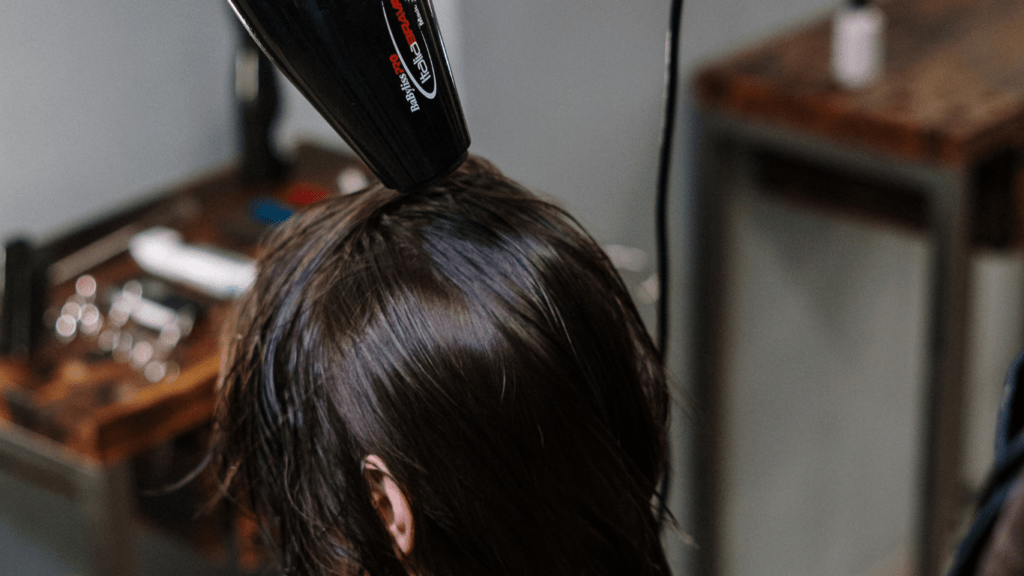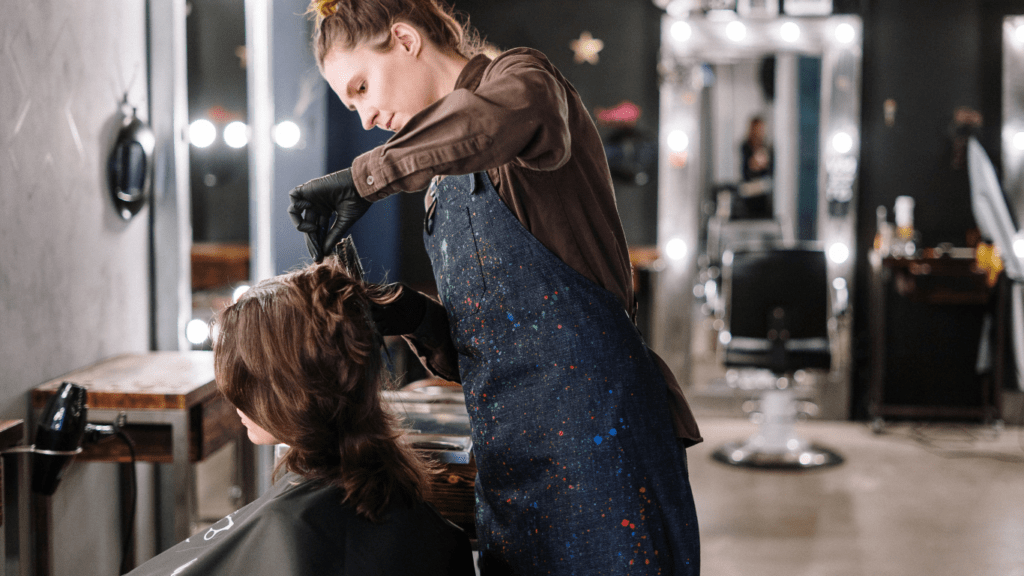Understanding Hair Styling Tools
Different types of hair styling tools serve unique purposes in achieving various looks. Knowing the function of each tool helps determine the best fit for individual needs.
Hair Dryers
Hair dryers are essential for fast-drying hair. Features like multiple heat settings and attachments such as diffusers and concentrators enhance versatility by catering to different hair types and styles. Ionic dryers reduce frizz by emitting negative ions.
Flat Irons
Flat irons excel at straightening hair. Plates are typically made of ceramic, tourmaline, or titanium. Ceramic distributes heat evenly and protects hair; tourmaline adds shine by releasing negative ions, and titanium heats quickly for efficient styling.
Curling Irons
Curling irons create curls and waves. Barrel sizes vary, providing different curl types—from tight ringlets to loose waves. Materials usually include ceramic, tourmaline, and titanium, similar to flat irons, ensuring smooth results and minimal damage.
Hot Air Brushes
Hot air brushes combine a hair dryer and a round brush. They’re ideal for adding volume and body while drying. They suit all hair types and typically offer various heat settings for customized styling.
Hair Rollers
Hair rollers offer a heatless styling option. Types include foam, Velcro, and heated rollers. They help create volume, curls, or waves and can be used overnight for longer-lasting styles.
Crimpers
Crimpers introduce texture with zig-zag patterns. Often used for adding volume or retro styles, modern crimpers usually feature ceramic plates to reduce heat damage.
Understanding these tools allows for careful selection and effective use.
The Dos of Hair Styling Tools

Understanding the appropriate uses of hair styling tools prevents damage and helps achieve professional results. Follow these key practices to ensure effective styling.
Do Choose the Right Tool for Your Hair Type
Select tools designed for your specific hair type to enhance styling results. For thin hair, use ceramic tools, as they distribute heat evenly. Opt for titanium tools if you have thick or coarse hair; they deliver consistent high heat. Adjustable temperature settings also help accommodate various hair textures.
Do Use Heat Protectant Products
Apply heat protectant sprays or serums to create a barrier between your hair and the high temperatures. These products, containing ingredients like silicones and natural oils, minimize heat damage and keep your hair looking healthy. Even if using a low-heat setting, always incorporate a heat protectant to ensure maximum protection.
Do Clean Your Tools Regularly
Clean your styling tools periodically to maintain their effectiveness and extend their lifespan. Remove hair strands from brushes and rollers after each use. Wipe down heated surfaces with a damp cloth when they are cooled to eliminate product buildup. Use a small brush to clean debris from flat irons and curling irons. Regular cleaning ensures even heat distribution and prevents damage to your hair.
The Don’ts of Hair Styling Tools
Using hair styling tools incorrectly can damage hair and reduce the lifespan of the tools. Avoid these common mistakes to keep your hair healthy.
Don’t Use Too Much Heat
Excessive heat damages hair. Consistently using the highest heat setting leads to breakage and dryness, especially for fine or colored hair types. Lower heat settings are often sufficient and safer. Invest in tools with adjustable heat settings to better protect your hair.
Don’t Use Old or Damaged Tools
Old or damaged tools pose safety risks and less effective styling. Cracked plates on flat irons and frayed cords on hair dryers cause inconsistent heat distribution, increasing the chance of hair damage. Regularly inspect tools and replace them when they show wear and tear.
Don’t Overuse Styling Products
Overusing styling products leads to buildup, reducing tool effectiveness and making hair greasy or stiff. Products like gels, sprays, and serums should be used sparingly to maintain the natural look of your hair. Cleanse your hair as needed to remove excess product and avoid residue buildup on your styling tools.
Best Practices for Hair Tool Maintenance
Proper maintenance extends the life of hair styling tools and ensures they function efficiently. Following a few key practices helps achieve the best results while keeping your tools in optimal condition.
Storing Your Tools Properly
Storing tools correctly prevents unnecessary wear and tear. Always unplug tools after use to avoid electrical hazards. Store flat irons, curling irons, and hair dryers in dry, heat-resistant cases. Avoid wrapping cords tightly around tools, as this can damage wiring over time. Keep tools in a cool, dry place, away from moisture, to prevent mold and mildew. Wall-mounted holders or drawer organizers can keep tools organized and accessible.
Regular Inspections and Replacements
Inspect tools regularly for signs of wear. Check for frayed cords, loose plates or barrels, and malfunctioning settings. Replace tools showing significant damage to avoid potential injuries or further damage to hair. Clean tools, especially brushes and combs, to remove hair and product buildup. Clean flat irons and curling irons with a damp cloth and mild cleaner to maintain their effectiveness. Replace tools every few years to ensure they deliver the best performance and safety. Regular inspections and timely replacements keep your styling routine safe and efficient.
Expert Tips for Safe Styling
- Consistent Use of Heat Protectants
Applying heat protectants before using any hot styling tools minimizes damage. Different heat protectants are available for various hair needs (e.g., anti-frizz, shine-enhancing). - Selecting the Right Temperature
Adjusting the temperature settings based on hair type prevents excessive heat exposure. Fine hair benefits from lower temperatures (below 300°F), while thick hair might need higher settings (up to 450°F). - Avoiding Wet Hair
Using styling tools on wet hair causes severe damage. Ensure hair is completely dry before applying heat, as damp hair cells are more susceptible to breakage. - Limiting Heat Exposure
Minimizing the time each section of hair is exposed to the heat reduces the risk of damage. Moving the tool continuously and avoiding prolonged contact protect the hair structure. - Regular Maintenance and Cleaning
Cleaning styling tools, like removing hair and product build-up, maintains functionality and hygiene. Inspecting tools regularly for wear and tear ensures they operate safely. - Using Quality Tools
Investing in high-quality styling tools with advanced features (e.g., ceramic plates, adjustable heat settings) offers better protection and efficiency. - Safe Handling and Storage
Storing tools properly after use prevents accidents and extends tool life. Tools should cool down completely before being put away, and cords should be wrapped loosely.
By adhering to these expert tips, safe styling becomes achievable, reducing the risk of hair damage from improper tool use.


 Jewelldane Fultz is a skincare specialist and beauty enthusiast who has spent years studying the science behind healthy skin. Known for her expertise in formulating effective skincare routines, Jewelldane emphasizes simplicity and consistency to help people achieve long-lasting results. Her in-depth knowledge of skincare ingredients makes her a trusted source for anyone looking to enhance their natural glow.
Jewelldane Fultz is a skincare specialist and beauty enthusiast who has spent years studying the science behind healthy skin. Known for her expertise in formulating effective skincare routines, Jewelldane emphasizes simplicity and consistency to help people achieve long-lasting results. Her in-depth knowledge of skincare ingredients makes her a trusted source for anyone looking to enhance their natural glow.
